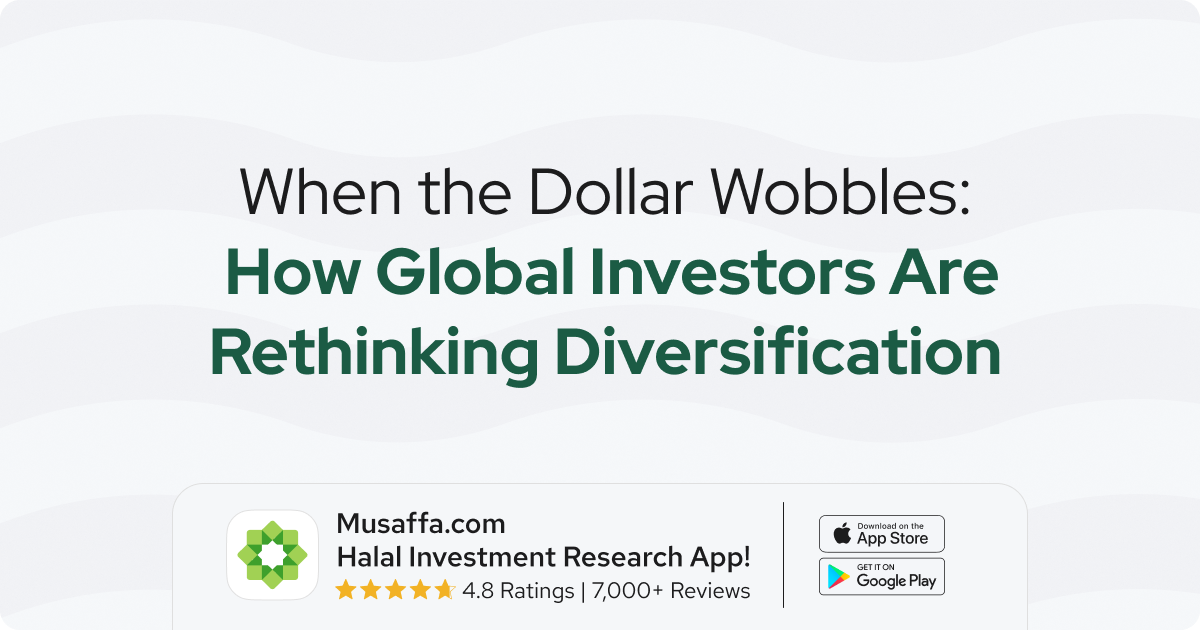
Written by Haider Saleem
Financial and Political Analyst | LinkedIn / X
The U.S. dollar is wobbling, and investors are watching closely.
Between delayed tariffs, widening deficits, and shaky Treasury demand, confidence in the world’s reserve currency is being tested.
While markets enjoyed a brief rebound after President Trump postponed sweeping EU tariffs, the deeper story is a global rethinking of risk. Capital is moving, and diversification is no longer optional.
The Dollar Under Pressure
The U.S. dollar index (DXY) recently touched a one-month low of 98.694 before stabilizing slightly. Analysts attributed the dip to a mix of factors:
· trade unpredictability,
· rising fiscal deficits, and;
· weak Treasury auction demand.
ActivTrades noted that “market participants respond to the continued policy uncertainty by shedding U.S.-denominated assets”.[1]
President Trump’s threat to impose a 50% tariff on EU goods from June 1, later postponed, rattled global markets. The euro jumped, European stocks climbed, and investors took a breather. But the relief was temporary.[5]
At the same time, concerns over the U.S. government’s fiscal trajectory are intensifying. Trump’s new tax bill, which passed the House and now faces Senate debate, could further widen the federal deficit. Moody’s has already stripped the U.S. of its top credit rating, highlighting investor concerns.[3]
A Global Rebalancing in Motion
All of this has prompted a quiet-but-growing reallocation of capital.
Large asset managers, institutional funds, and even sovereign wealth funds are looking beyond traditional dollar-denominated assets. The European Central Bank is expected to cut interest rates amid subdued inflation, and Asian manufacturing hubs are drawing investment as global supply chains recalibrate.[2]
Foreign holdings of U.S. Treasurys – once considered unshakeable – are slipping. The weak demand seen in recent auctions, especially in longer-dated notes, is a signal investors are growing wary of Washington’s debt trajectory.[2]
Markets Drawing Global Capital
Southeast Asia: export & electronics revival
Countries like Singapore and Malaysia are seeing a pickup in foreign interest thanks to their export-oriented economies. With the U.S.–EU tariff tensions unresolved, manufacturers are diversifying supply chains. Singapore’s upstream electronics component exports, in particular, have surged during the 90-day reprieve from tariffs.[2]
China: stronger yuan/strategic realignment
Goldman Sachs expects the yuan to appreciate steadily, forecasting a USD/CNY rate of 7.00 within 12 months. China continues to reorient its export strategies, while central bank gold purchases – primarily driven by China and Russia – have hit record highs.[2]
Europe: relative calm amid rate cuts
Despite trade tensions, the eurozone has emerged as a relative safe haven. European auto stocks and industrial exporters rallied after Trump delayed tariffs, and the euro climbed to a one-month high against the dollar. With rate cuts expected from the ECB, many investors view Europe as a stabilizing region in an increasingly fragmented global economy.[5]

Start Your Halal Stock Screening Journey
New to halal investing? Musaffa makes it easy to screen stocks, check Shariah compliance, and purify your portfolio — all in one place. Make informed, ethical decisions every step of the way.
Gold’s Enduring Role
Gold briefly slipped following the tariff delay announced in late May, falling 0.6% to $3,335.89 an ounce[3]. But the dip may be short-lived. Goldman Sachs has forecasted that gold could rise to $4,000 per ounce within the next two years. The rationale?
- surging central bank demand;
- a lack of trust in U.S. fiscal policy, and;
- gold’s proven resilience in times of inflation and geopolitical risk.[4]
Gold is up more than 25% year-to-date. Moody’s downgrade of the U.S. has only strengthened gold’s appeal as a hedge. Unlike U.S. Treasurys, which can be frozen or sanctioned, gold remains politically neutral. “Once you cross the Rubicon, it’s tricky to come back,” said one Goldman strategist, referring to the post-Ukraine shift in reserve preferences.[4]
Strategic Screening Still Matters
As investors look beyond the U.S., due diligence becomes more important.
Screening isn’t just about returns. Investors can use tools to make evaluations beyond a company’s or market’s financial health, ethical alignment, and regional risk. E.g. those pursuing values-based investing – whether through ESG frameworks or Shariah compliance – this becomes especially relevant.
Tools such as Musaffa’s screening platform can support investors exploring new opportunities abroad.
Conclusion
The dollar’s leadership isn’t over – but it’s being tested.
With uncertainty mounting, investors are adapting.
A world of new opportunities is emerging beyond the U.S., and diversification may be a smart move.
References
1. Diversification Away From U.S. Assets to Dent Dollar Further, Dow Jones, May 26, 2025.
2. Upcoming Auctions Could Be Key for Treasurys, Dollar, Dow Jones, May 26, 2025.
3. Gold Slips as Haven Demand Eases After Trump Delays EU Tariffs, Bloomberg, May 26, 2025.
4. Gold to Top Bitcoin and Silver on Way to $4K Per Oz, Says Goldman Sachs, Forbes, May 25, 2025.
5. U.S. Futures and European Stocks Rise After Trump Delays EU Tariffs, Forbes, May 26, 2025.
6. How to Use Gold and Other Hard Assets to Hedge Against Inflation, Forbes, May 24, 2025.

Disclaimer: The content is for informational purposes only and does not constitute legal, investment or financial advice.
It is important to conduct your own research or consult with a financial or investment advisor. Past performance is not indicative of future results. All logos or brands are referenced for identification purposes only and do not constitute an endorsement of any kind. This information is accurate as of the date of publication and may not reflect recent changes. Access our comprehensive legal disclaimers at https://musaffa.com/disclaimer.

 Go Premium
Go Premium